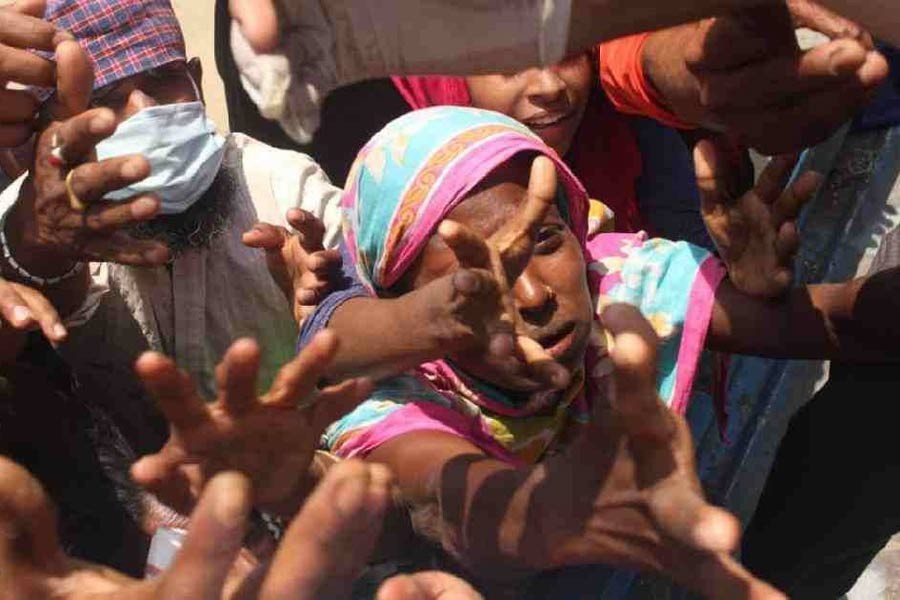The World Bank's latest report says more than half of Bangladesh's poor households will live in urban areas soon even though 8 in 10 poor currently live in rural areas.
Urban is the frontier in poverty reduction, said the report styled 'Bangladesh Poverty Assessment: Facing Old and New Frontiers in Poverty Reduction'.
Very little poverty reduction occurred in urban areas between 2010 and 2016 and the share of urban people living in extreme poverty remained the same, the reportfound.
The finding is rather perplexing given the tremendous pace of economic growth during the period.
About one in four Bangladeshis still live in poverty, while almost half of those living in poverty live in extreme poverty and are unable to afford a basic food consumption basket.
Using the international poverty line, a measure that allows comparison with poverty levels in other countries, the rate of poverty in Bangladesh is relatively high by regional standards, the report said.
In Bangladesh 14.8 percent of the population live in poverty, bested only by India in the Saarc region. Some 21.2 percent of the population still live under the international poverty line in the neighbouring country.
Since 2000, the country has reduced poverty by half. In the last decade and a half, it lifted more than 25 million out of poverty.
There has been little growth in the share of the Bangladeshi labour force engaged in industry, and this has limited the amount of poverty reduction derived from the country's industrial growth.
Between 2005 and 2010, overall labour force participation in urban areas increased because of a substantial increase in FLFP. The expansion of the garment sector was an important force in raising FLFP as 80 percent of the employees are female.
The stagnation in poverty reduction in services is also concerning given that around 44 per cent of the urban poor are part of households primarily engaged in the sector. In fact, tackling urban poverty is critical.
In the wake of the rising number of slums inhabited by poor and extreme poor people, the cities need more anti-poverty schemes to eradicate urban poverty alongside eliminating other poverty-related social problems like child marriage and drug addiction, as those are on the rise.
Public representatives and others concerned need to think about ways and means on how to formulate a joint action plan to free the poor and the extreme poor communities from the vicious circle of poverty and hunger.
In spite of the fact that the country has improved the status of nutrition of the under-five children in the last two decades, it still has a long way to go to combat malnutrition. In order to reduce vulnerability of the rural poor, analysts suggested finding a permanent solution to the annual monga, a seasonal food crisis caused by lack of work.
Bangladesh is trying to address the issue of hunger with its available resources and in the last two decades. It has succeeded to some extent in improving the health of the under-five children. There is a need for increasing investment in sustainable agricultural development to address the country's poverty situation.
The national poverty rate fell in both rural and urban areas, but the pace of reduction was much slower in urban Bangladesh, largely because of slower rates of poverty reduction in Dhaka and increasing poverty in Chottogram. There was no progress in reducing extreme poverty in urban areas.
Sustained poverty reduction will necessitate coordinated multi-sectoral actions. Investments to raise agricultural productivity and growth in the demand for salaried work in the manufacturing and service sectors are crucial for maintaining growth in labour income.
Particular emphasis needs to be placed on programmes that focus on: early childhood development in ways that integrate health and nutrition services, pre-school education, early stimulation and learning, and also programmes focused on building skills and improving the employability of poor youth.
Formulation of an effective plan of action has become an urgent need for freeing the poor and extreme poor communities and slum dwellers in the cities from poverty and hunger.


